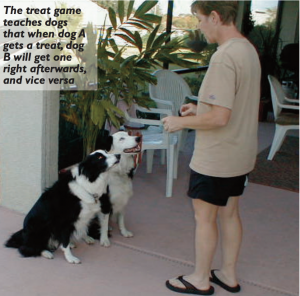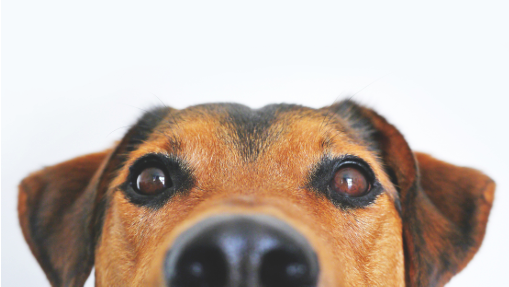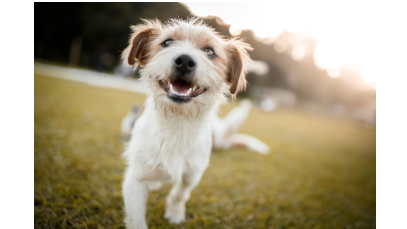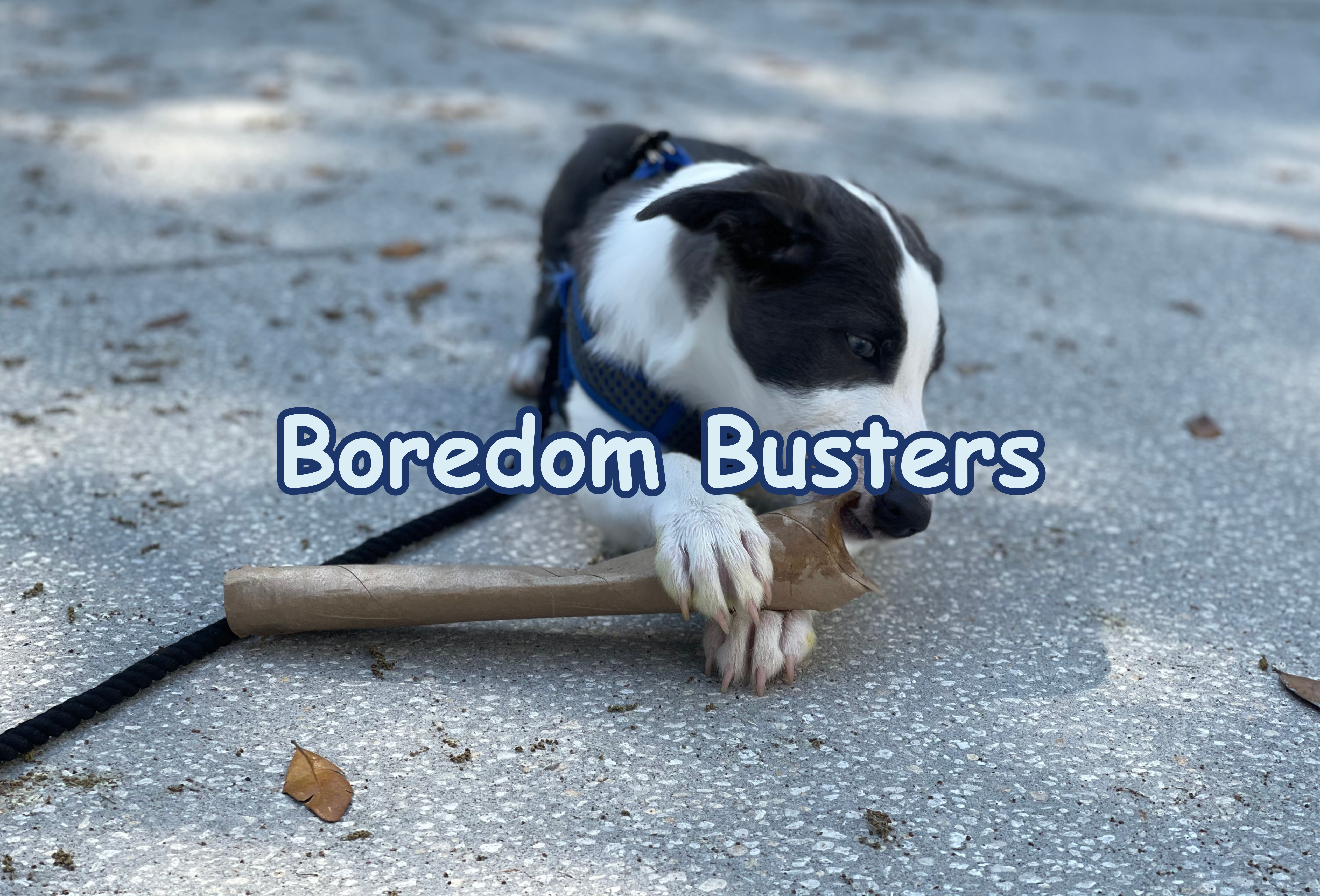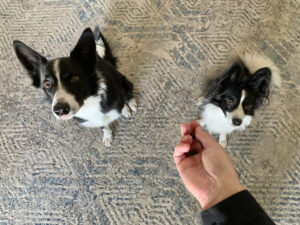
The image above is an advanced version of the game, your coach will help you find the ideal starting point.
By Angelica Steinker, M.Ed., PCBC-A, AABP-DBCT, CDBC, CAP2
Please note that if your dogs have a history of fighting, do not play the sharing game without the guidance of a professional. Safety is always first if you have any inkling your dogs may even become tense then play the sharing game with a barrier only. If dogs display any tension, breath holding, freezing, barking, lunging, growling or biting at the other dog stop the sharing game session and contact your trainer.
Teaching two dogs to share food or toys helps prevent aggression and promotes harmony in your dog family. To play the sharing game, ask both dogs to sit, then feed one dog and immediately feed the second dog. Please note that if the dogs have a history of showing signs of stress or tension you must at least separate the two dogs via a baby gate. Alternately if you have more than two dogs you need to play the games with each set of two dogs.
In the picture to the left, the two dogs pictured live in the same home and do not have a history of growling, nipping, lunging or fighting over resources. You can see that the is preparing to feed one of the dogs a treat as the other dog patiently waits. This game teaches dogs that dog A getting a treat predicts dog B will get a treat and vice versa. In behavior terms, you are respondently conditioning the dogs that the presence of the other dog is actually a good thing and means it is more likely that both dogs will get treats!
If the two dogs had a history of resource guarding from each other, both dogs would be on leash and either held by two assistants, allowing the person feeding to move back and forth between the two dogs. If necessary you can even have two people, one feeding each dog machine gun style to start with. This creates what is called behavioral momentum and can help jump start success. Gradually over time, the distance between the two dogs is decreased, but only if the dogs body language is showing signs of joy.
If you have played the sharing game with food, you want to make sure to also play it with toys. Dogs don’t automatically transfer learning from one context to another. The toy sharing game is played exactly the same way except that instead of food, the toy is toggled back and forth between the two dogs.
Toy Sharing Game
Again you start with leashes or baby gates if needed and using two toys to start with may be helpful. Keep the play very calm at first to help set the dogs up for success. Very gradually begin increasing the intensity and the duration of the play. Be sure to change only one variable at a time, first intensity and then duration before adding both intensity and duration. When you do add intensity and duration go back to half of the duration you have been doing previously.
Physical Touch Sharing Game
Likewise, you can also teach dogs to share human affection. As before, toggle back and forth between the two dogs, first petting dog A and then dog B and so on.
Chew Toy Sharing Games
Remember that dogs may also have trouble sharing things like chew toys. If this is the case you can have one person hold one chewy for dog A and a second person holds a chewy for dog B. Over time, as long as the dogs are displaying body language consistent with relaxation and joy you can decrease the distance between the dogs.
Training Tips for Sharing Games
Sharing game training needs to be broken down into TINY steps. This has several purposes:
- It keeps the dog sub threshold, meaning the dog is displaying body language consistent with being happy and relaxed.
- It makes the process seem ridiculously easy to the dogs which instills joy in the dog.
- It empowers the dog to control the process via their signs of stress. If they show even mild stress, you immediately make it easier. If they are happy, you make it a tiny bit harder.
- Remember the fastest way to do it, is the slowest. you move thru the approximations, training steps, quickly. If you push, and the dogs get tense, you lose.
- When not training avoid any triggers! The only time the dogs are exposed to each other and any resource that may trigger guarding is when you are having a fun training session.
- Before you do training sessions, be sure the dogs are exercised. Using a toy like a flirt pole to wear both dogs out prior to a sharing game session is an ideal approach.
- Keep the training sessions short and happy!

Please let me hear how your sharing game training goes. Let’s share our adventures playing sharing games!
Download a PDF handout of this post here!

